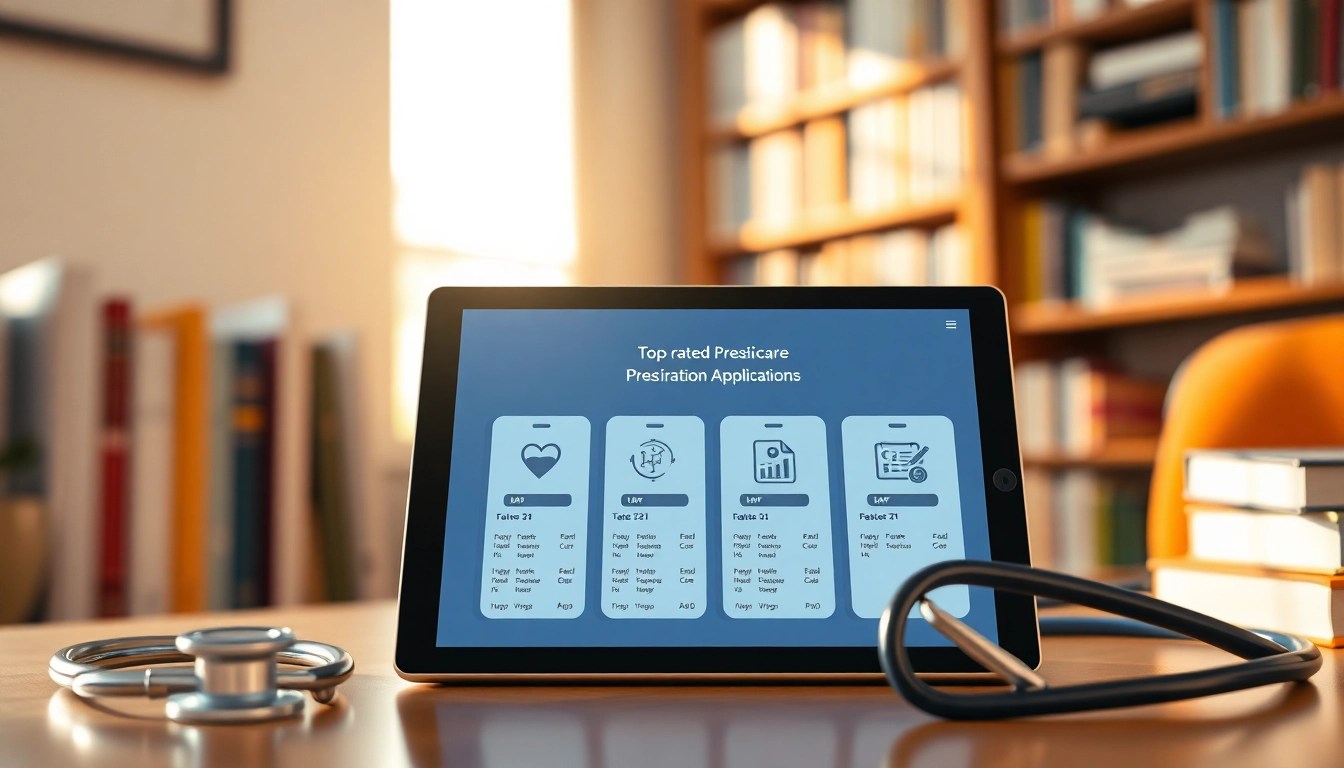
The Importance of Eprescribing Software for Doctors
As the healthcare landscape continues to evolve, the integration of technology plays a crucial role in enhancing service delivery and patient outcomes. One of the most significant advancements in this realm is the implementation of eprescribing software for doctors. This tool streamlines the prescribing process, reduces paper waste, and minimizes medication errors, thereby paving the way for a more efficient healthcare system.
What is Eprescribing Software for Doctors?
Eprescribing software is an electronic system that allows healthcare providers to write and send prescriptions directly to pharmacies via digital means. Unlike traditional, paper-based methods, this software utilizes technology to enhance accuracy, facilitate convenience, and ensure legibility in patient prescriptions. Healthcare professionals can monitor patient medications, access patient history, and manage refills more efficiently, making it a vital tool in modern medical practice.
Key Benefits for Healthcare Providers
The advantages of employing eprescribing software are manifold:
- Enhanced Accuracy: Automated systems reduce the risk of human error associated with handwritten prescriptions. This enhances the safety of medication dispensing, ultimately protecting patients.
- Improved Efficiency: Eprescribing expedites the prescription process by eliminating the need for phone calls or physical prescription drops, allowing providers to focus more on patient care.
- Better Patient Management: Providers can track patient medication history, adherence, and potential adverse drug interactions, leading to more tailored care strategies.
- Cost-Effectiveness: By reducing reliance on paper and streamlining the prescribing process, healthcare offices can cut down on operational costs.
- Simplified Communication: Eprescribing facilitates direct communication between providers and pharmacies, ensuring timely and effective order fulfillment.
Compliance and Regulatory Considerations
Healthcare compliance is a critical facet of any medical practice, and when dealing with prescriptions, it becomes paramount. Most eprescribing software solutions are designed to comply with regulations such as the Drug Enforcement Administration’s (DEA) rules regarding controlled substances. These systems often include features for electronic prior authorization, integration with state Prescription Monitoring Programs (PMPs), and assurance of data security and integrity to maintain HIPAA compliance.
Features to Look for in Eprescribing Software for Doctors
Integration Capabilities with EHR Systems
When selecting eprescribing software, one of the most significant features to consider is its ability to integrate seamlessly with existing Electronic Health Record (EHR) systems. This integration allows for a holistic view of patient health records, enabling doctors to make informed decisions about prescriptions without needing to switch between different platforms. Look for software that supports standard integration protocols to ensure smooth data flow across systems.
User-Friendliness and Accessibility
A user-friendly interface is essential for ensuring that providers can adopt the software without extensive training. Software should be intuitive, allowing healthcare professionals to navigate easily and effectively. Features such as mobile access can further enhance usability, enabling doctors to write and manage prescriptions from any location. Implementing solutions that are accessible from various devices supports the accessibility needs of different healthcare settings.
Data Security and Patient Privacy Measures
In the digital age, protecting patient data is a top priority. Eprescribing software must adhere to strict security protocols to safeguard sensitive information. Look for features such as encryption, user authentication, and regular security audits to ensure compliance with regulations. Additionally, providers should be aware of the importance of data privacy agreements and ensure that their software vendor shares their commitment to protecting patient information.
Common Challenges Associated with Eprescribing Software for Doctors
Technical Issues and Support Services
Despite the numerous benefits, implementing eprescribing software is not without its challenges. Technical issues, such as software bugs or system downtime, can hinder productivity. It is essential to partner with vendors who provide reliable customer support and regular updates to mitigate these issues. Consider services that offer 24/7 support to address potential problems quickly.
Training and Adoption Among Staff
Getting staff on board with new technology can often be a barrier to effective implementation. In many cases, initial resistance to change can impede the transition to an electronic system. To facilitate smoother adoption, comprehensive training programs should be developed that focus on all aspects of the software’s usage— from basic tasks to advanced features for experienced users. Furthermore, establishing a tech-savvy champion within the practice can promote acceptance and ease the transition.
Managing Patient Data Safely
With the extensive use of technology comes the responsibility of managing patient data securely. Practices must establish protocols for data access, storage, and sharing to prevent unauthorized access. Regular audits and training can help ensure that all staff understand the importance of data privacy and compliance with relevant laws and regulations.
Best Practices for Implementing Eprescribing Software for Doctors
Step-by-Step Implementation Process
Implementing eprescribing software requires careful planning and execution. Here’s a structured approach to achieving a successful transition:
- Assess Needs: Start by identifying the specific requirements of your practice. Consider the types of medications frequently prescribed, anticipate future needs, and the capabilities of your current systems.
- Select a Vendor: Research and compare various eprescribing systems, focusing on features, pricing, support, and integration capabilities.
- Plan the Rollout: Develop a timeline for implementation that allows for thorough testing and staff training. Involve key staff members in the planning process to ensure their insights are incorporated.
- Train Staff: Conduct training sessions to familiarize users with the new system, ensuring that they understand all functionalities.
- Monitor and Optimize: Once the system is live, monitor its performance closely. Gather feedback from users and make necessary adjustments to improve the process.
Engaging Patients in the Transition
Involving patients in the transition to eprescribing can enhance their experience and reduce anxiety about changes in their care. Consider conducting informational sessions to educate patients about the benefits of electronic prescriptions, including improved safety and convenience. Encourage them to ask questions and provide feedback throughout the transition process to foster trust and acceptance.
Evaluating and Optimizing Performance
Regularly assessing the performance of your eprescribing software is critical to ensure it meets your practice’s objectives. Key performance indicators (KPIs) such as prescription error rates, time saved per prescription, and user satisfaction levels can provide insightful metrics to gauge effectiveness. Feedback loops with both staff and patients can prove invaluable for ongoing improvements.
Future Trends in Eprescribing Software for Doctors
Emerging Technologies and Innovations
The landscape of eprescribing is continuously evolving as new technologies emerge. Adoption of Artificial Intelligence (AI) to predict patient medication needs, machine learning algorithms for improving medication adherence, and blockchain for enhancing security protocols are just a few trends on the horizon. Becoming acquainted with these innovations can lead to even better patient care outcomes and operational efficiencies.
Impact of Telehealth on Eprescribing
The rise of telehealth has significantly changed the prescribing landscape. As virtual visits become more common, the integration of telehealth platforms with eprescribing software can facilitate immediate prescription delivery and enhance patient interaction. This trend emphasizes the significance of having adaptable software that can respond to the demands of an increasingly digital healthcare environment.
Patient-Centric Solutions and Customization
With an increase in patient-centered care models, eprescribing software is evolving to provide customizable solutions. Providers are expected to have the ability to tailor communication preferences, medication reminders, and refill processes to cater to individual patient needs. This level of personalization can greatly enhance patient engagement and inspire greater adherence to treatment plans.








